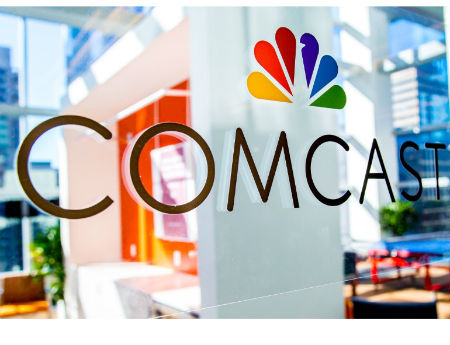Comcast Eyes Upstream Expansion as it Pulls Fiber Deeper

DENVER – To help it keep pace with capacity demands, Comcast is eyeing an upstream path-widening “mid-split” that ties into a plan to pull fiber closer to the home to the point that the operator is using a “passive” HFC plant that reduces the number of powered amplifiers between the node and the home to zero.
Comcast is on that mid-split path, which would raise the expand the amount of spectrum dedicated to the upstream from today’s 5 MHz to 42 MHz range to 85 MHz, according to Robert Howald, VP of network architecture at Comcast, during a keynote discussion here Tuesday at Light Reading’s Next-Gen Technologies & Strategies conference.
Some operators are taking a look at a “high-split” that would raise the upstream spectrum ceiling to about 200 MHz, but Comcast’s sticking with a mid-split “for now,” he said, noting that the effort is happening as the MSO pushes ahead with its new “fiber deep” architecture, which is also referred to as “N+O” to describe the number of electrified amps (zero) between the home and the node.
“Fiber deep is a methodical way to do a bunch of node splits all at once,” Howald said in a separate panel discussion, noting that it gives an operator the ability to use spectrum for flexibly, support smaller service group sizes, alongside improved maintenance because the coax portion of the plant becomes passive.
Comcast hasn’t announced a deployment timeframe for fiber deep, but “we’re trying to get there quickly,” he said.
Comcast and other MSOs are also taking a close look at Full Duplex DOCSIS, a longer-term annex to DOCSIS 3.1 that will allow upstream and downstream traffic to run in the same block of spectrum and enable symmetrical multi-gigabit speeds on HFC networks. The hardware specs for Full Duplex, expected to work in tandem with N+0 and more distributed access architectures that push more of the electronics from the hub to the node, are expected to be published by mid-year.
“I think we’re in pretty good shape with what we’re doing with the network,” Howald said, pointing to the capabilities of DOCSIS 3.1 and Full Duplex DOCSIS (FDX), when asked why Comcast doesn’t just skip over N+0 and go with FTTP. “I wouldn’t necessarily say it’s inevitable,” he said of FTTP.
Multichannel Newsletter
The smarter way to stay on top of the multichannel video marketplace. Sign up below.
Full Duplex Update
FDX is just one “neat and novel” tool at cable’s disposal as they eye ways to handle upstream demand, alongside nodes splits and changing how MSOs are splitting the upstream and downstream paths on the spectrum, Jeff Finkelstein, executive director of advanced access architectures at Cox Communications, said during a separate panel discussion.
FDX is “like having your cake and eating it too,” because it allows cable operators to add upstream capacity without taking away from the downstream,” Steve Krapp, technical marketing director at MaxLinear, said.
FDX is a “tool that will give us more flexible to make the upstream than it is today,” Howald said. “At its core, [FDX] is a DOCSIS 3.1 technology. It’s not like we’re inventing something new …we’re adding new tools to make it more capable.”
While average bandwidth demands aren’t rising immensely, the max needs for the upstream are rising 20% to 30%, and the downstream needs are increasing 40% to 50% on a CAGR basis, Tom Cloonan, CTO for system architecture at Arris, said.
Based on current projections, Cloonan sees the era of symmetrical broadband services starting in 2019. “I think [Full Duplex DOCSIS] will come out just in time when customers need gigabit upstreams,” he said.
Finkelstein said DOCSIS 3.1, paired with a high-split, could enable 1-Gig symmetrical services at low penetrations, and referred to the current upstream weakness of DOCSIS 3.1 as the “iceberg” of the platform. But he also said that a D3.1 enhancer like FDX will put MSOs in position to deliver symmetrical gigabit speeds at higher penetrations.
During a keynote earlier in the day, Finkelstein also termed fiber buildout as one of Cox’s “non-regrettable” spends, alongside its early decision to build capacity to 1 GHz and the MSO’s early adoption of bandwidth-saving techniques like switched digital video.
“Rule number one: You can never have too much fiber,” he said. “You never regret having fiber.” But he also stressed that “coax has a long life” as MSOs transition along the path of DOCSIS 3.1, FDX and going with fiber deep architectures.
5G as a multi-gig access technology
Discussions and debates during the day also centered on 5G and its potential as an access technology that can deliver gigabit speeds to the home.
RELATED: Verizon Gets a Fix on 5G Trials
During a keynote discussion, Balan Nair, executive VP and chief technology officer at Liberty Global, didn’t mince words when asked if 5G was a good replacement for access. “Terribly false…Bullshit,” he said.
RELATED: Fiber In The Sky (subscription required)
Earlier, Howald played up the backhaul opportunity that 5G presents to MSOs. “Good wireless needs good wires,” he said, reiterating a recent study showing that Comcast’s broadband infrastructure fits 5G wireless networks like a glove.
RELATED: Smit: Comcast’s Fiber Network Plans Have 'Uncanny' Compatibility with 5G
Howald also noted that 5G signals, when delivered in the high frequency bands, don’t propagate well in the presence of trees and buildings. “They hardly like air,” he joked.
5G’s limitations in the millimeter bands is why service providers will need to consider a “dual-PHY” approach that can fall back to sub-6GHz spectrum that doesn’t require line-of-sight, Charles Cheevers, chief technology officer for consumer premises equipment at Arris, said in a panel on cable’s pursuit of wireless and mobile tech and services.
The downside with dual-PHY is that it will make 5G CPE more costly, Cheevers said.
